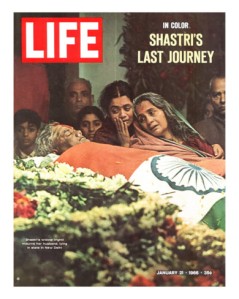After my last post “How Indira Gandhi became the Prime Minister: Prelude to the Congress Split” some of the readers pressed upon me to write a deeper explanation for the phenomenon known as the Syndicate. Hence this post:
By the end of 1963, Nehru was dying. For the first time in sixteen years since independence, New Delhi was rife with speculation about the question – “After Nehru, who?” To answer this question, four men met at the Tirupathi Temple in the beginning of October, 1963. These were K Kamaraj, the former Chief Minister of Madras, Sanjiva Reddy, an Andhra leader, Nijalingappa, the Chief Minister of Mysore and Atulya Ghosh, the president of Bengal Congress Committee. Together, these men controlled the power of the Congress party in non-Hindi states. Soon, along with a Maharashtra leader SK Patil, they will be come to known as the Syndicate.
Ostensibly, the leaders were at Tirupathi to offer worship at the shrine, but secretly they were together to discuss the future of the country and how to shape it after Nehru. The two questions in front of them were who shall be the next Prime Minister and who will become the next president of the Congress Party, a post that would be tremendously important after Nehru’s death. It wasn’t so much that they agreed on who should fill these posts as who should not – Morarji Desai. Desai was the most prominent leader in the party after Nehru and most likely to succeed him. However, his very prominence was a threat to the Syndicate. Had he become the Prime Minister, his domination would have been complete, leaving the Syndicate members to the fringes. The Syndicate wanted someone more malleable, someone they could control.


